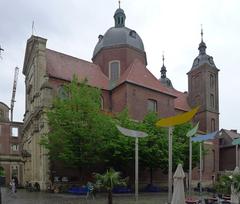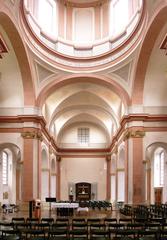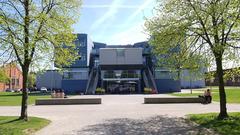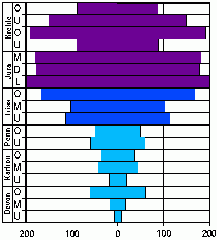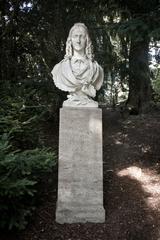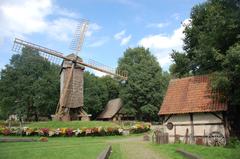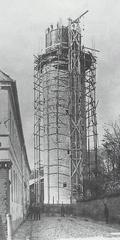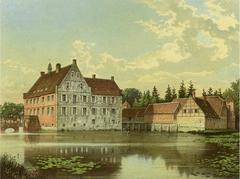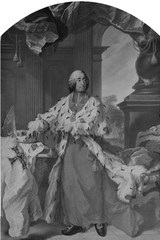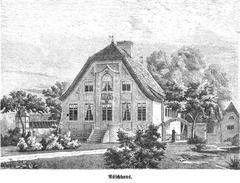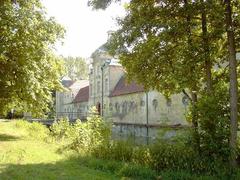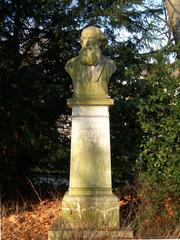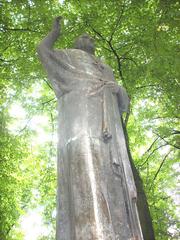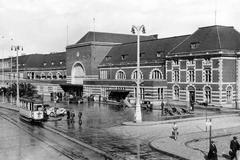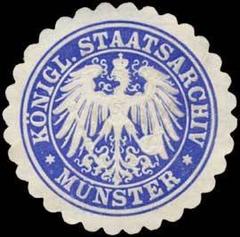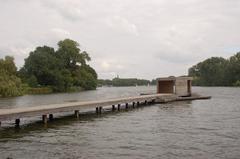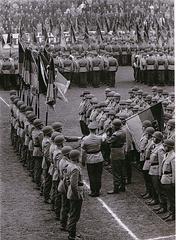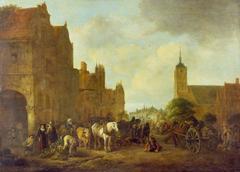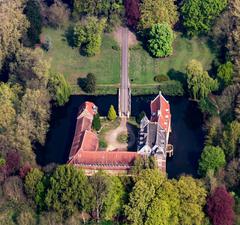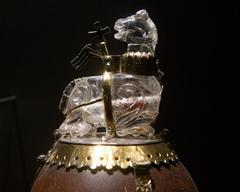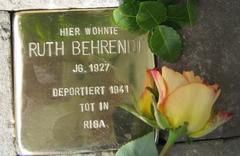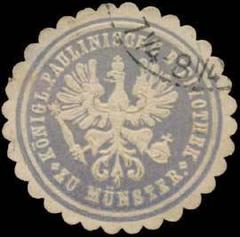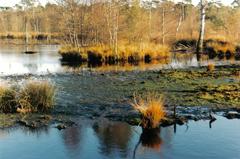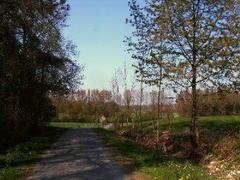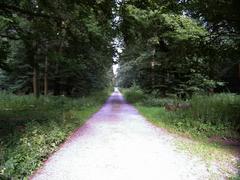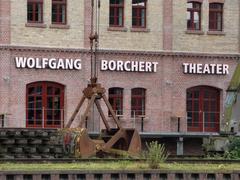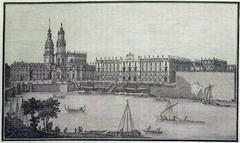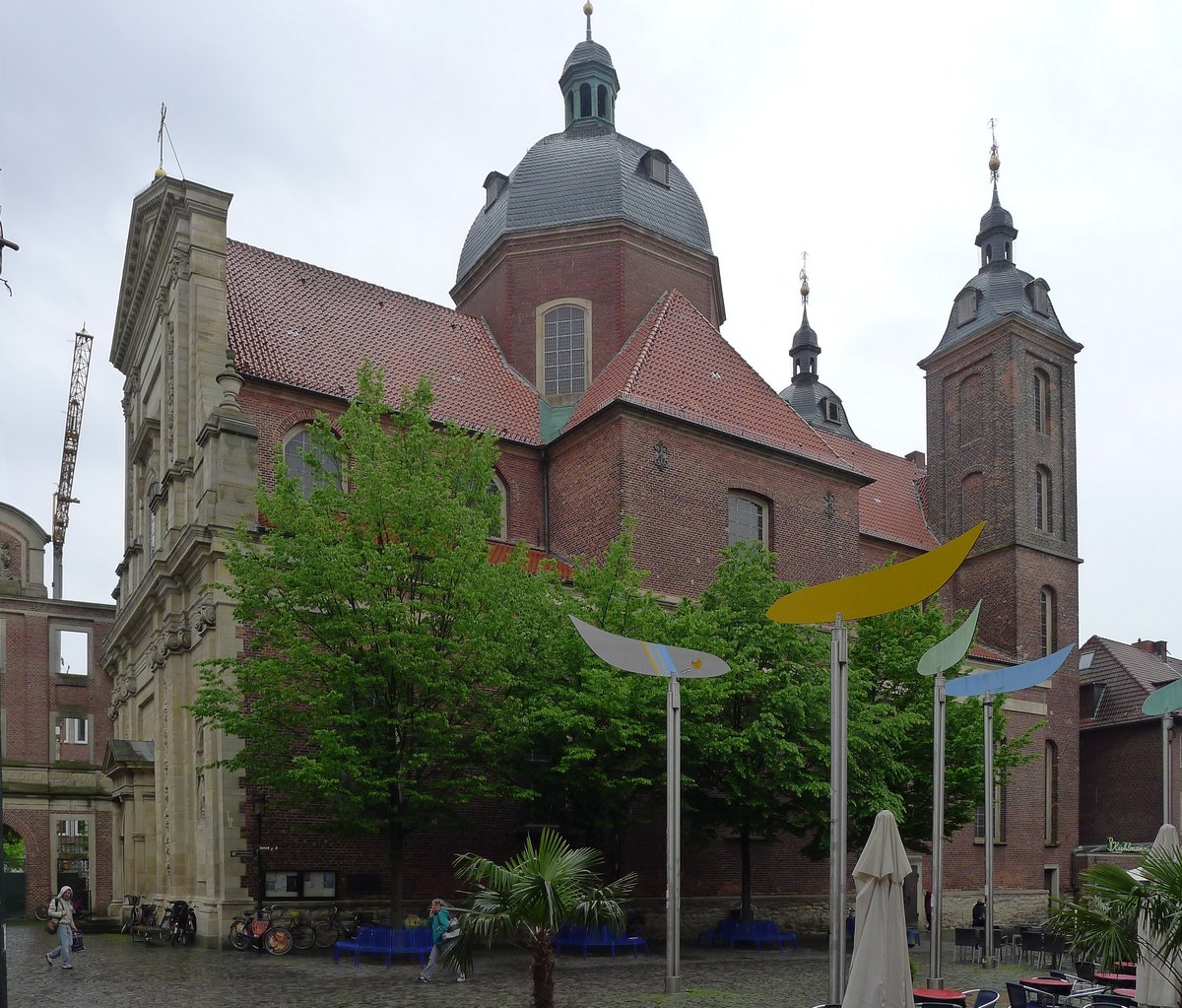
Visiting Dominikanerkirche: Hours, Tickets, and Tips
Date: 01/08/2024
Introduction
The Dominikanerkirche, or Dominican Church, in Münster, Germany, stands as a testament to the city’s rich cultural and spiritual history. This historical gem, initially established as part of a Dominican monastery in the 13th century, has evolved architecturally and functionally over the centuries. From its Gothic beginnings to its Baroque transformation, the Dominikanerkirche encapsulates the architectural grandeur of its time. This comprehensive guide delves into the church’s origins, architectural evolution, and its significance in the modern era. Whether you are a history enthusiast, an architecture aficionado, or a curious traveler, this guide will provide you with all the necessary information to make the most of your visit to the Dominikanerkirche. (Explorial, Wikipedia)
Table of Contents
- [Origins and Early Construction](#origins-and-early-constructionorigins-and-early-construction)
- [Architectural Evolution](#architectural-evolutionarchitectural-evolution)
- [Secularization and Later Uses](#secularization-and-later-usessecularization-and-later-uses)
- [World War II and Reconstruction](#world-war-ii-and-reconstructionworld-war-ii-and-reconstruction)
- [Modern Era and Contemporary Art](#modern-era-and-contemporary-artmodern-era-and-contemporary-art)
- [Archaeological Discoveries](#archaeological-discoveriesarchaeological-discoveries)
- [Significance and Legacy](#significance-and-legacysignificance-and-legacy)
- [Visitor Information](#visitor-informationvisitor-information)
- [Ticket Prices and Guided Tours](#ticket-prices-and-guided-toursticket-prices-and-guided-tours)
- [Accessibility](#accessibilityaccessibility)
- [Nearby Attractions](#nearby-attractionsnearby-attractions)
- [Frequently Asked Questions (FAQ)](#frequently-asked-questions-faqfrequently-asked-questions-faq)
- [Conclusion](#conclusionconclusion)
Origins and Early Construction
The Dominikanerkirche, located in the heart of Münster, Germany, has a rich history that dates back to the 13th century. The church was initially established as part of a Dominican monastery. The construction of the monastery began in 1265 and was completed by the end of the 14th century. This period marked the church as a significant center for spiritual growth and education for over three centuries. (Explorial)
Architectural Evolution
The architectural style of Dominikanerkirche is predominantly Gothic, characterized by its tall pointed arches, ribbed vaults, and large windows. These elements add a sense of grandeur to the structure. The church’s exterior features buttresses that support the high walls, typical of Gothic architecture. (Explorial)
In the 17th century, the Dominicans acquired a plot of land on Salzstraße and began constructing the monastery buildings and a chapel. The probable year for the commencement of these constructions is 1694, with the church itself being built starting in 1708. The church was designed by the architect Lambert Friedrich von Corfey and constructed between 1705 and 1725. The façade of the church is a Roman Baroque style, which is unusual for the region and more commonly found in Southern European countries. (Wikipedia)
Secularization and Later Uses
The monastery and church served their religious purposes until the secularization in 1811, when the Dominican monastery was dissolved. The property was transferred to state (Prussian) ownership, and from 1826, the church was repurposed for military use. In 1880, the city of Münster acquired the church and converted it into a school church for the municipal Realgymnasium, now known as Ratsgymnasium. (Wikipedia)
World War II and Reconstruction
During World War II, Dominikanerkirche, like many other historical buildings in Europe, suffered extensive damage from air raids. The church was largely destroyed, but restoration efforts began shortly after the war. The reconstruction process was meticulous, aiming to preserve the original character of the church. The rebuilding of the church extended until 1974, with significant milestones such as the re-erection of the dome starting in 1961. (Explorial)
Modern Era and Contemporary Art
In the modern era, Dominikanerkirche has continued to evolve. The church building was used by the Catholic university congregation until its profanation in November 2017. Today, it stands as a symbol of resilience and perseverance through challenging times. The church is also notable for housing contemporary art, including the installation “Two Gray Double Mirrors for a Pendulum” by Gerhard Richter. (Stadt Münster)
Archaeological Discoveries
In 2012, archaeologists made a significant discovery under the floor of the former monastery kitchen. They found skeletons believed to be those of monks who had prayed in a church that possibly existed as early as 1676, decades before the current church was built. This discovery has provided new insights into the early history of the site and has the potential to change the historical narrative of the Dominikanerkirche. (Wiki Münster)
Significance and Legacy
The Dominikanerkirche is not just a historical monument but also a testament to the architectural and cultural evolution of Münster. Its Gothic and Baroque elements, combined with its history of resilience and adaptation, make it a significant landmark. The church’s ability to integrate contemporary art within its historical framework adds to its unique charm, making it a must-visit destination for history buffs, art lovers, and tourists alike. (Explorial)
Visitor Information
For those planning to visit, the Dominikanerkirche is generally open to visitors daily from 10:00 AM to 6:00 PM. However, these timings may vary depending on special events, religious services, or maintenance work. It is advisable to check the official website or contact the church directly for the most accurate and up-to-date information. (Explorial)
Ticket Prices and Guided Tours
Admission to the Dominikanerkirche is free, but donations are appreciated to help with the maintenance and restoration of the church. Guided tours are available and can provide deeper insights into the church’s rich history and architectural details. It is recommended to book guided tours in advance, especially during peak tourist seasons.
Accessibility
The Dominikanerkirche is accessible to visitors with disabilities. However, some areas may have limited accessibility due to the historical nature of the building. Visitors with specific needs are encouraged to contact the church in advance to ensure a smooth visit.
Nearby Attractions
The area surrounding Dominikanerkirche is equally captivating, with quaint streets lined with charming old buildings. Nearby landmarks include the Prinzipalmarkt, Münster’s historic marketplace filled with beautiful gabled houses, and St. Lambert’s Church, known for its distinctive three iron cages hanging from its tower. (Explorial)
Frequently Asked Questions (FAQ)
What are the visiting hours for Dominikanerkirche?
The Dominikanerkirche is generally open to visitors daily from 10:00 AM to 6:00 PM, but these timings may vary. It is advisable to check the official website or contact the church directly for the most accurate and up-to-date information.
Is there an entry fee for Dominikanerkirche?
Admission to the Dominikanerkirche is free, but donations are appreciated to help with the maintenance and restoration of the church.
Are there guided tours available?
Yes, guided tours are available and can provide deeper insights into the church’s rich history and architectural details. It is recommended to book guided tours in advance.
What are the best times to visit Dominikanerkirche?
The best times to visit Dominikanerkirche are during the spring and summer months when the weather is pleasant, and the surrounding area is bustling with activity.
Conclusion
The Dominikanerkirche in Münster is more than just a historical monument; it is a living testament to the city’s resilience and rich cultural heritage. From its Gothic and Baroque architectural elements to its modern-day role as a hub for contemporary art, the church offers a unique blend of history and modernity. Visitors can marvel at its architectural splendor, explore its rich history, and enjoy the various contemporary art installations housed within its walls. Whether you are interested in the intricate details of its construction, the stories of its past, or simply looking for a serene place to reflect, the Dominikanerkirche is a must-visit destination. Plan your visit today to experience this remarkable site and immerse yourself in the captivating history and beauty it has to offer. (Stadt Münster, Wiki Münster)
References
- Explorial. (n.d.). Dominikanerkirche. Retrieved from Explorial
- Wikipedia. (n.d.). Dominikanerkirche (Münster). Retrieved from Wikipedia
- Stadt Münster. (n.d.). Dominican Church. Retrieved from Stadt Münster
- Wiki Münster. (n.d.). Dominikanerkirche. Retrieved from Wiki Münster
